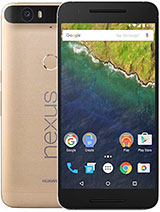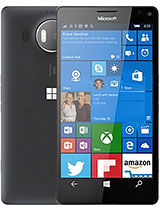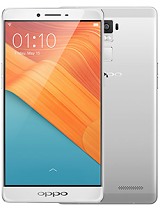Samsung Galaxy A9 (2016) review: A-lister
A-lister

Final words
Samsung has put a lot of work into the new Galaxy A series and it's clear it wants to recreate the flagship success of the S and Note phones, except in a more attractive price bracket.
The Samsung Galaxy A9 (2016) will be the face of the series - its size is an instant attention-grabber and its specs are better than the other A models.
Sometimes the A9 has slightly better specs, other times the gap is significant. The clearest example is the chipset, it's essentially twice as fast as the S615 used in the A5 and A7 that we tested earlier. Here are our other impressions of the A9, summarized.
Samsung Galaxy A9 (2016) key test findings
- Flagship-level build quality but imposing size makes one-hand use difficult
- Display has perfect colors and is always legible; The lower pixel density isn't a real issue (flicker may bug some people, though)
- Great battery life, strong performance all tests
- Full software package with split-screen multitasking and first-party Samsung apps; Too much storage is reserved for the system though
- Fast fingerprint reader (as fast as on the S6/Note5); Samsung Pay (in select markets)
- S652 chipset essentially delivers flagship-level performance (without the heat)
- Great multimedia app package with advanced music player, FM radio too
- The loudspeaker is better than the smaller A-phones, but you need to pick the right ringtone
- Perfect audio quality if you have an external amp, but volume drops when you plug in headphones
- In the right conditions, photo quality comes close to the Note5, but the A9 captures less detail and has lower dynamic range in general; Pro mode is more a name than a feature; bright aperture are appreciated though
- Video quality at 1080p is basically the same, audio isn't as good; No 4K mode, even though the chipset supports it
Phone screen size has been growing rapidly, but even so the Galaxy A9 (2016) is above average. Or you could say it's ahead of the curve, as the growth shows no signs of slowing down.
The A9 rides another trend too, that of the premium flagship. It combines a luxury build with early adopter features like fingerprint-secured mobile payments with a price tag more people can afford than just the actual early adopters.
And the phone delivers on both counts excellently. Holding the Galaxy A9 (2016) in one hand and the Note5 in the other, we were drawn to the A9 more. The screen is of very high quality though it has some issues that may irk a percentage of the population. The camera too is very good, with some complaints (like why drop the 4K mode?).

There's no Galaxy A8 (2016) yet (expected screen size ~5.7"), but the Samsung Galaxy Note5 corrects any complaints we may have about the A9. Aside from the microSD slot, of course. The price tag is quite a bit higher though.
The Huawei Mate 8 goes all in on metal and it too has a 6" 1080p screen (IPS LCD). The Kirin chipset impressed in some benchmarks, not so much on others. The main disappointment was the camera though - stills are nothing special, there's no 4K and 1080p videos are just average.
Also from Huawei is the all-metal Nexus 6P. This one puts on a 5.7" AMOLED (sourced from Samsung) with QHD resolution. The 12.3MP camera has a large sensor geared towards low-light shooting and you do get 4K video and high-fps mode (720p @ 240fps). The S810 chipset successfully fought off the 652 and, of course, you get timely updates of the unaltered software.
The Microsoft Lumia 950 XL has a similar 5.7" QHD AMOLED and it steps up the camera game with a 20MP sensor, ZEISS optics with f/1.9 aperture and optical image stabilization. Windows 10 has some appeal with Continuum, but if you depend on certain Android apps you should check if they are available on the Microsoft platform.
The vivo X6Plus and Oppo R7 Plus are another way to get a 1080p AMOLED. The Oppo is bigger with a 6" screen, but a slightly slower chipset. The vivo has a 5.7" screen and is a mere 6.9mm thick. Both phones have 13MP/1080p cameras and 8MP selfie cams, all-metal bodies too.
The LG V10 is less fancy, more rugged. Its metal frame was built to withstand knocks, its rubbery back cover too. The 5.7" QHD screen has an interesting trick - an always on ticker display on top. The V10 camera is among the best put on a mobile, sharp at day and at night, with a ton of manual settings.
Whether it's the sheer size of the Samsung Galaxy A9 (2016) or its intrepid chipset, the A9 is our favorite of the three 2016 A-series phones we've reviewed yet. However, it's success in the market may be sabotaged by a mundane reason - availability.
At the time of this writing, the phone can be found only in China and Hong Kong. If you want it elsewhere, you either have to find a gray import or do the importing yourself. We believe the Galaxy A9 deserves a wider reach, it's one of Samsung's best phones in the last 12 months.
Reader comments
- Woodpops
- 14 Aug 2017
- 7vc
It seems to use up its battery power very quickly or am I doing something wrong
- hunaini
- 04 Feb 2017
- KZJ
Why it doesnt have notification light 😭😭😭
- Anonymous
- 16 Jan 2017
- 7j{
Plz know This phon battery life?






